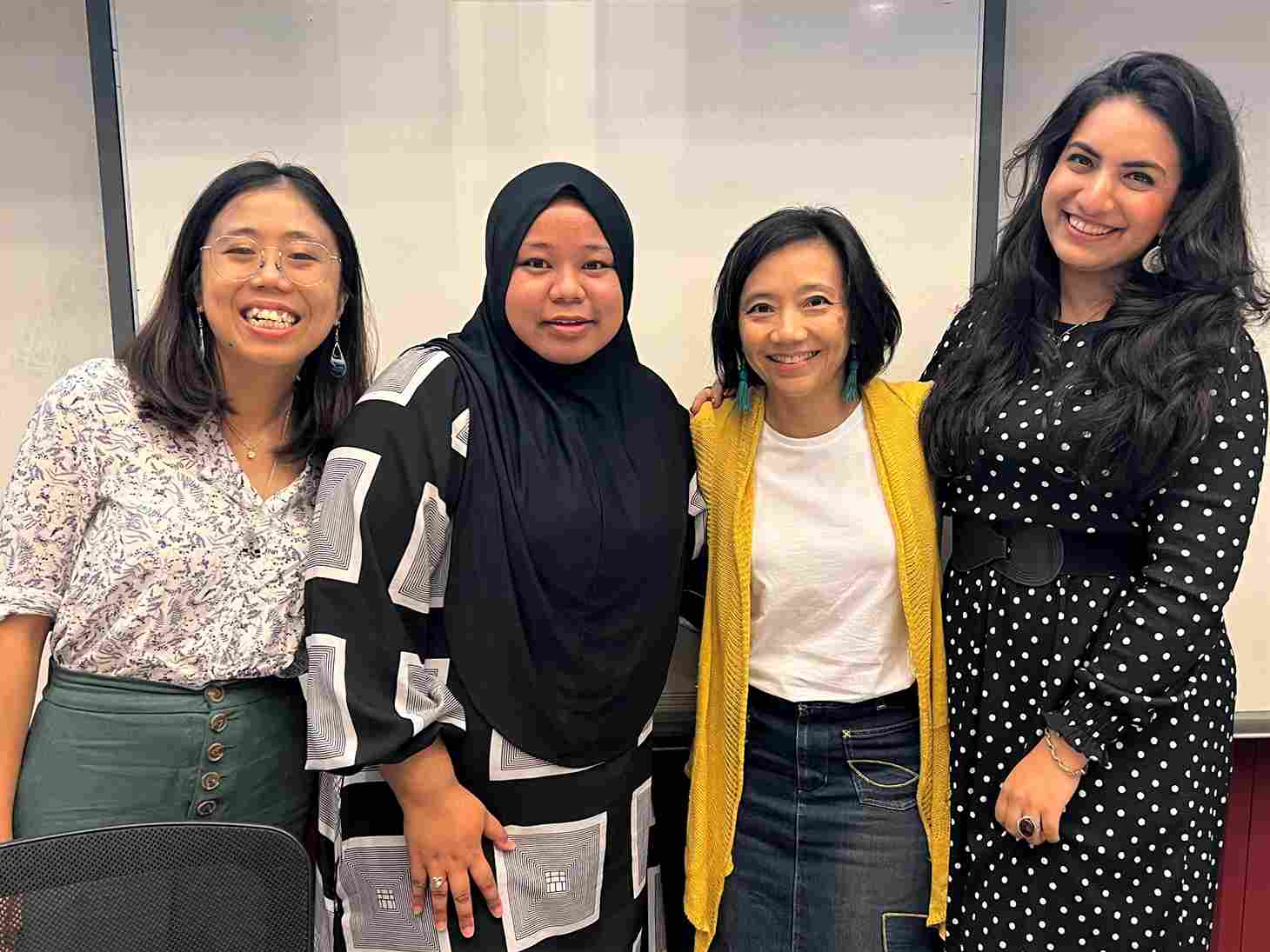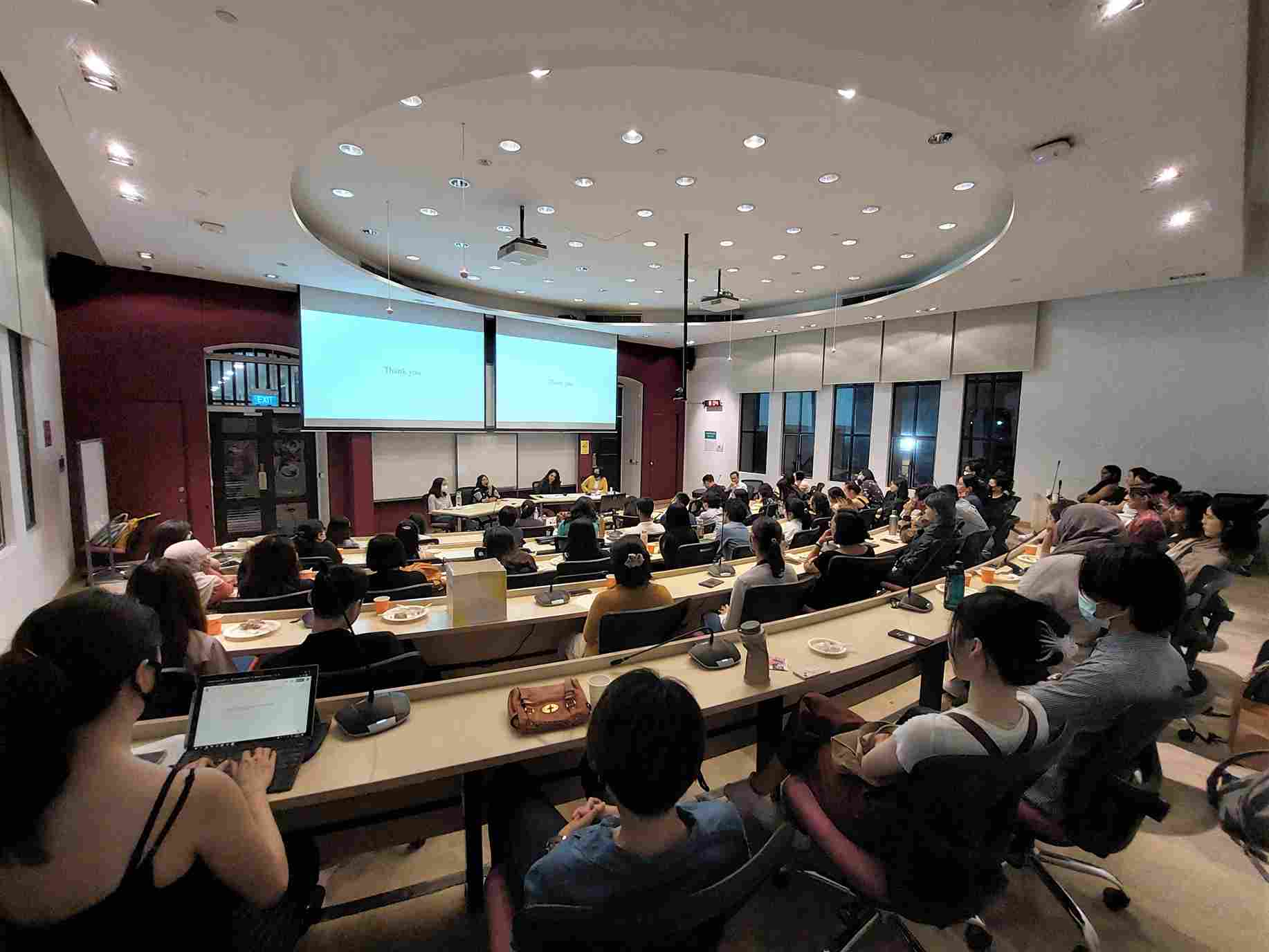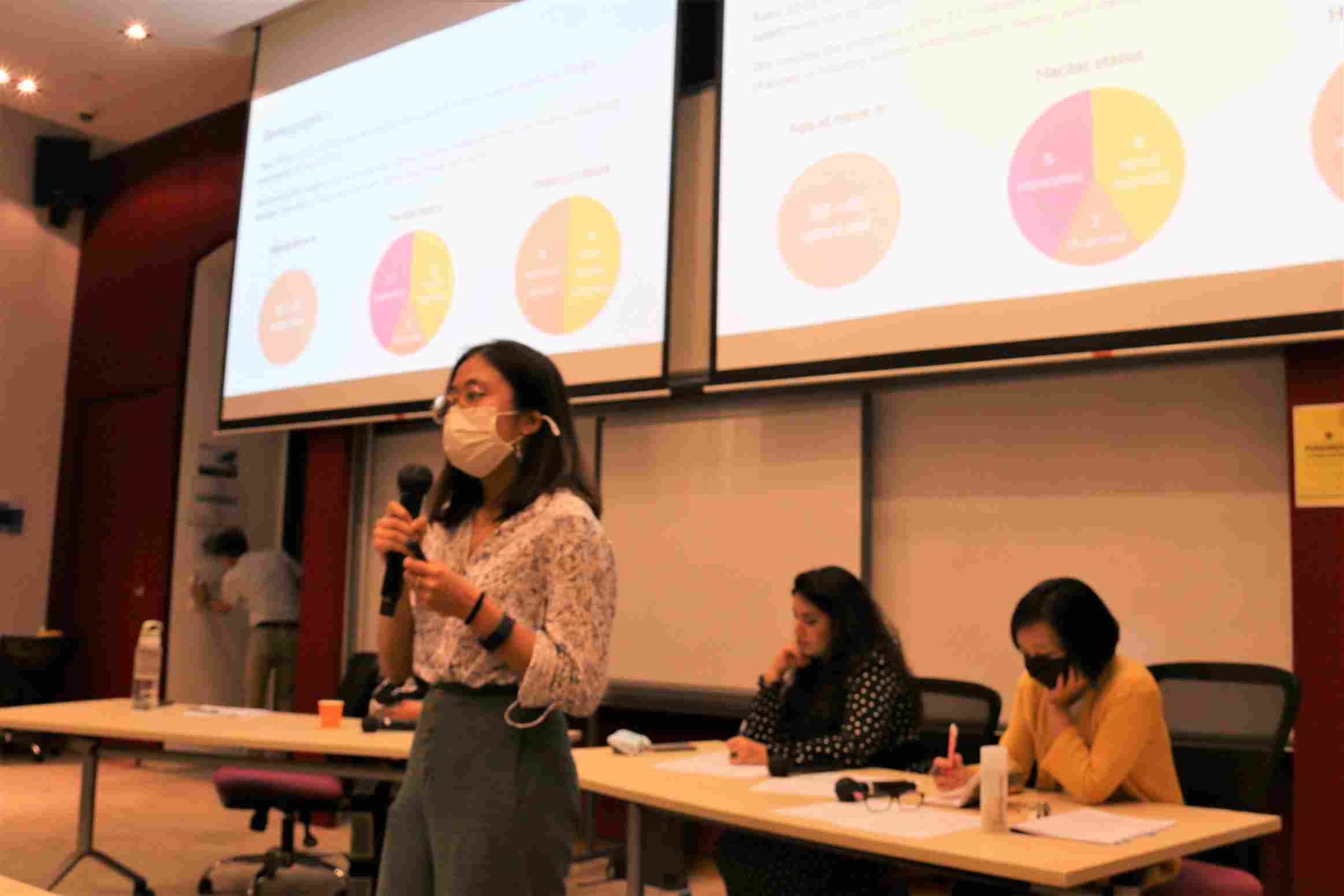-
Advocacy Theme
-
Tags
- Abortion
- Adoption
- Caregiving
- CEDAW
- Disability
- Domestic Violence
- Domestic Workers
- Harassment
- Healthcare
- Housing
- International/Regional Work
- Maintenance
- Media
- Migrant Spouses
- Migrant Workers
- Muslim Law
- National budget
- Parental Leave
- Parenthood
- Polygamy
- Population
- Race and religion
- Sexual Violence
- Sexuality Education
- Single Parents
- Social Support
- Sterilisation
- Women's Charter
A Recap: Living in Limbo – Gender and housing insecurity in Singapore
November 16th, 2022 | News, Poverty and Inequality

written by Kimberly Wong, Research Executive, AWARE
Why is it that in Singapore—a nation widely recognised for its comprehensive public housing programme—many people still encounter housing barriers?
On 19 October 2022, two days after the United Nations International Day for the Eradication of Poverty, around 60 attendees gathered at the Lee Kuan Yew School of Public Policy (LKYSPP) to hear from a range of experts about this issue.
Titled Living In Limbo: Gender and housing insecurity in Singapore, the panel featured Jeyda Simren Sekhon Atac, research assistant in the Social Inclusion Project (SIP) at LKYSPP; Liyana Dhamirah, author of Homeless: The Untold Story of a Mother’s Struggle in Crazy Rich Singapore; and AWARE Project Executive Lee Yoke Mun. The panel was moderated by researcher Dr Stephanie Chok.
The conversation drew upon a growing body of local research about the gendered realities of housing insecurity in Singapore. This includes AWARE’s evaluation of the Support, Housing and Enablement (S.H.E.) Project, a research-based service that provided stable and decent housing, alongside transformational support programmes, for 18 low-income single-mother families; AWARE’s earlier work on single mothers’ access to public housing; SIP’s nationwide street counts of homelessness; and the Minimum Income Standard studies on the costs of a basic standard of living in Singapore.
To set the context, Simren first defined homelessness as the experience of living in inadequate housing situations. She highlighted three dimensions through which this adequacy can be perceived: security (e.g. tenure, exclusive occupation and affordability), physical adequacy (e.g. hygiene, safety, space), and social adequacy (e.g. privacy).
The forms of homelessness include:
- Primary homelessness, where people do not have accommodation and sleep in public spaces not intended for human habitation;
- Secondary homelessness, where people live in temporary accommodation (e.g. shelters and hostels), or move frequently due to unavailability of permanent housing;
- Tertiary homelessness, where people live in inadequate accommodation (e.g. overcrowded housing), or may imminently lose their housing due to eviction, violence or lack of social support.
Homelessness thus does not solely exist as rough sleeping, but also manifests in many different ways.

Below are three key takeaways from the discussion:
1. Housing insecurity and homelessness exist on a continuum
An earlier study in 2019 found that the street homeless population in Singapore was somewhere between 920 and 1,050 persons. Comparing the 2019 and 2021 iterations of the street count, Simren pointed out that the form—rather than scale—of homelessness in Singapore had changed over the years: In 2021, it was observed that street homelessness had fallen by 41%, while temporary shelter occupancy exponentially grew by more than six times. This difference may be chalked up to greater visibility of the homeless population, due to wider outreach and increased shelter capacity during the COVID-19 pandemic.
Importantly, Simren argued that the pandemic did not cause the housing insecurity that these people experienced—it only exacerbated the challenges they had already been facing pre-pandemic.
Apart from organising street counts, SIP also conducted interviews with 51 shelter residents to better understand the common underlying factors contributing to housing insecurity, one being family conflict and divorce. Due to the complex nature of these family issues, leaving their homes felt almost irreversible to these individuals. Additionally, insecure work and income meant that they simply could not afford housing and other basic needs. Some also faced barriers relating to public rental housing, in terms of cost and conflicts with landlords and roommates. Finally, physical and mental health conditions impeded some residents’ abilities to earn stable wages, thus affecting their access to housing.
Looking at the gendered patterns of homelessness, Simren highlighted that women accounted for an average 11% of the street homeless population in 2019 and 2021. This relatively low percentage could be due to women’s concerns over their safety when sleeping rough, which might lead them to rely more on social support networks for shelter. Women were therefore more likely to experience secondary and tertiary homelessness as compared to men, who constitute the majority of the street homeless population. Such informal social support, however, was often short-lived. Many women found themselves in limbo again once the goodwill of their friends and family ran out.
That said, research on homelessness in Singapore remains in its nascent stages. At the end of her presentation, Simren highlighted the need to pay more attention to tertiary homelessness and the groups that are disproportionately vulnerable to it, such as women experiencing domestic violence, low-income migrants and the LGBTQ community. Others who may face tertiary homelessness include those living in substandard, over-crowded conditions and struggling with high housing costs.
2. People may “hide” homelessness in a variety of ways
Liyana’s presentation was based on both her own previous experience as a mother facing homelessness in Singapore, and on conversations she has had with other people in similar housing-insecure situations.
To Simren’s point about the hidden facets of homelessness, she posited that some intentionally seek night or shift work to stay accommodated. For instance, a hospital attendant she met would choose to work the night shift so that they could sleep in the hospital during the day. Others felt that they drew less attention from the authorities when they slept in public spaces after their night shifts, due to the time of day.
Women experiencing domestic violence constitute another “invisible” group of homeless persons: Yoke Mun added that in particular, domestic violence victim-survivors like the S.H.E. residents face certain economic and social constraints—such as leaving or reducing paid employment to provide care—that limit their access to housing. In the event that they do escape from abusive situations, they are more likely to rely on their connections for a place to stay and only turn to shelters and other services when all other options are exhausted.

Other groups of women who face “hidden” forms of housing insecurity, Liyana said, include low-income single mothers, women in caregiving roles and women with medical care needs and mental health conditions. Although Singapore tends to view family as the first line of support, these individuals may not be able to rely on family due to violence and conflict. For those who lack other options, being forced to live with their family can lead to the loss of their autonomy.
3. Stable housing matters
Interviews with residents of the S.H.E. Project revealed that stable housing positively impacted their employment situation and well-being.
Nine of the 12 residents, Yoke Mun said, had full-time, part-time or casual employment at the end of their stay at S.H.E., while eight saw improvements in their employment situation, such as finding better-paying jobs. The median income also rose from $500 before S.H.E. to $1,150 after S.H.E.
With regards to their well-being, both the mothers and their children expressed feeling safer and happier as they were able to live in an environment free from violence. The mothers also enjoyed a better relationship with their families of origin and their children saw improvements in their temperaments and academic performances.
In line with the theme of this year’s International Day for the Eradication of Poverty, “Dignity for all in practice”, she then shared AWARE’s recommendation for the scaling up of the S.H.E. Project, to provide stable housing (alongside support services) for at least two years to more unwed mothers and domestic violence victim-survivors with no alternative living arrangements. This would provide these women with the stability to address other challenges that they are facing, such as unemployment, without having to worry about housing.
Overall, the event saw an engaged audience, with several attendees sharing their experiences working with individuals facing housing insecurity in the social services sector. Others indicated their interest in engaging in research and advocacy around the issue.
When asked how the public may contribute to efforts around supporting vulnerable groups, Liyana suggested speaking to more people who are directly experiencing this issue but may not have been included in previous studies, though the panel and Kok Hoe also reminded attendees of the weighty ethical considerations involved in conducting research with vulnerable persons. Drawing on her personal experiences, Liyana also suggested writing to Members of Parliament to help connect those facing housing insecurity with the resources that they need, provided that those individuals first grant consent. Simren also proposed volunteering for relevant research projects, such as SIP, on top of writing to Members of Parliament to advocate on matters that resonate with them. Lastly, Yoke Mun suggested that writing letters to local media outlets would help keep the issue in the spotlight.



